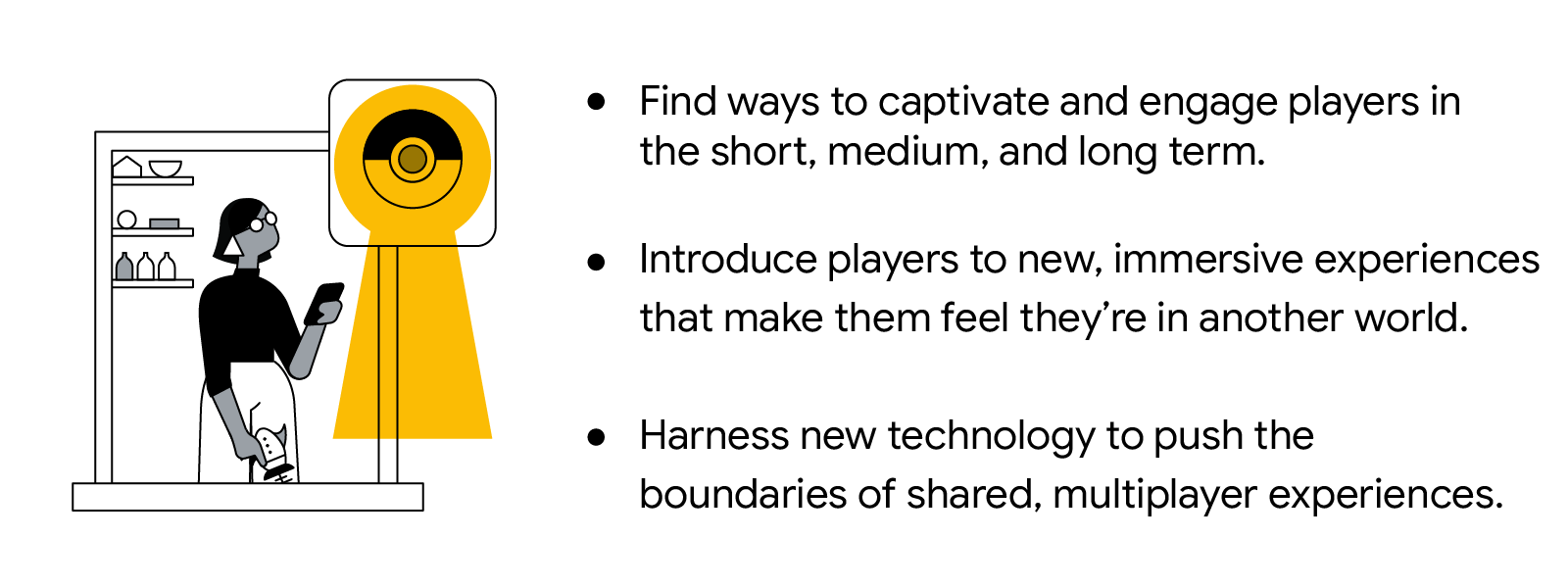From the first mobile game ever released to the latest massively multiplayer online role-playing game (MMORPG), the gaming experience has evolved considerably for mobile gamers. With every new release, they’re expecting a richer, more immersive gaming experience — one that also lets them interact with other players and build communities.
As the mobile gaming industry grows and developers face competition from thousands of daily game releases, how can they keep players engaged?
To help answer this question, we sat down with Greg Borrud, vice president of games at Niantic — the software development company that gave us “Ingress,” “Harry Potter: Wizards Unite” and the wildly popular “Pokémon Go.”
With over a billion downloads since 2015, “Pokémon Go” is by far Niantic’s biggest hit — spawning a vibrant, global community of avid augmented reality (AR) Pokémon trainers.
This is made possible through the Niantic Lightship AR platform, which also provides real-time 3D mapping and multiplayer social experiences. With this technology, Niantic has reimagined the way we play mobile games — keeping players mesmerized in a dimension that blends the virtual world and real life.
Here, Borrud pinpoints three ways in which developers can take the player experience to the next level: by building engagement in games, creating immersive experiences and keeping the gaming experience social.

Level 1: Build worlds that captivate
“Once people find the game that they love, they stick with it.”
The worlds designed by game developers need to engage players from the moment they download the game and then through the years of gaming action that follow. There are several different stages of how players, new and experienced, will engage with a game. Here’s how to keep them engaged at each stage:
Short term: New players
With new players, the most important thing to ask is: does the game deliver on their expectations? This is the gateway to getting them to become long-term advocates of your game.
Medium term: Existing players
Think about what will keep a player returning to the game throughout the day. Central to this is a well-designed core gameplay loop that will motivate players — from the excitement of catching a Pikachu to leveling up their character.
Long term: Players for life
Engaging players for the long-term comes down to the social aspect of the game. What are the core gameplay loops that turn into meta-loops that keep players coming back through the years? Incorporating social interactions is one way to do that. For example, Pokémon Go Fest, which went virtual in 2020 because of the pandemic, has allowed fans to engage in that shared experience over the years.
Level 2: Build worlds that are immersive
“Create immersive worlds that you walk into and become a part of.”
What’s really exciting right now in the entertainment business is immersive experiences. From immersive theater shows to amusement parks, immersive worlds allow people to walk into and become a part of them. It’s a new form of entertainment that sits at the core of AR.
With the evolution of smartphone technology, improved GPS, and 5G, it’s possible to do anything on a mobile device. Layer on AR and it changes not only how we play games but also how we look at the world around us.
Level 3: Build worlds for sharing
“Multiplayer experiences are going to really define the next 5 to 10 years.”
Multiplayer experiences are going to define the next decade and game developers can anticipate industry innovations that allow dynamic, multiplayer gaming via mobile devices.
As processing power increases and network speed capabilities are expanded, we will see an explosion of content harnessing the power of these technologies. There will be endless possibilities for game developers to push the boundaries of what people want to experience.





